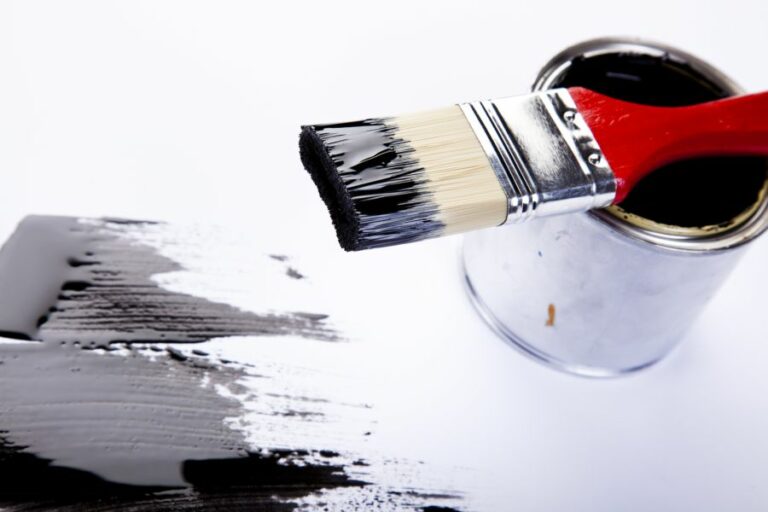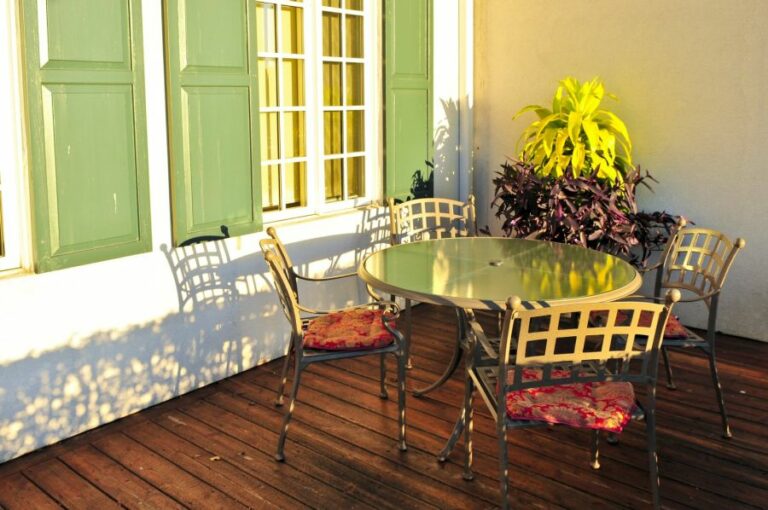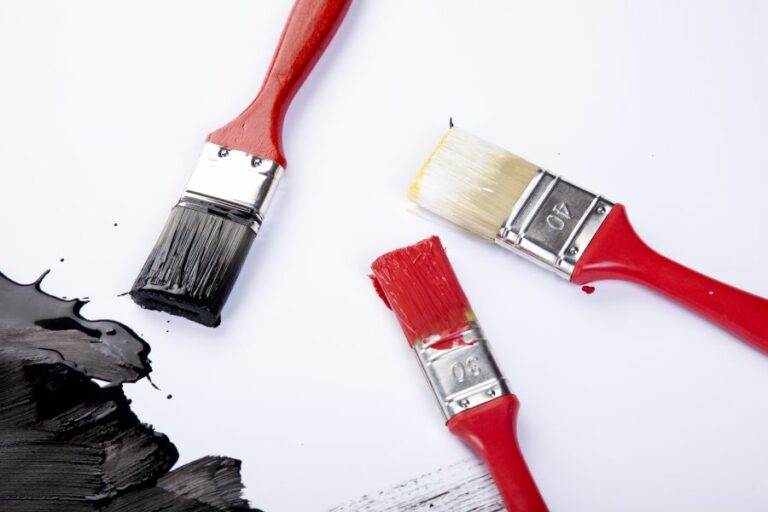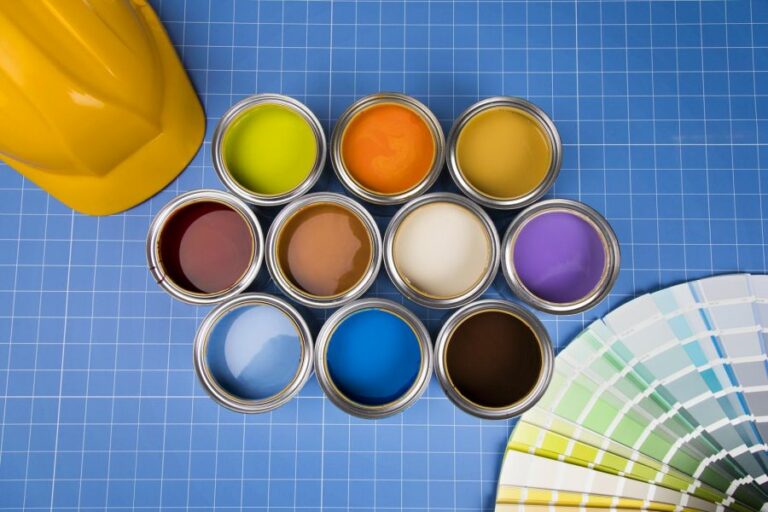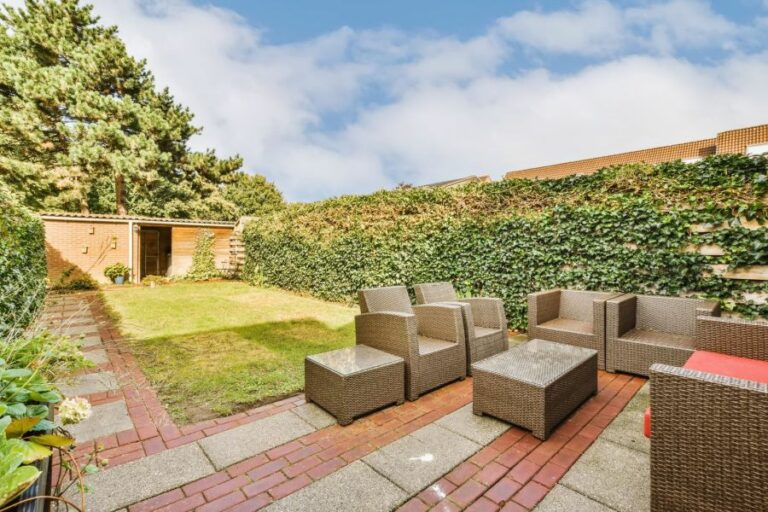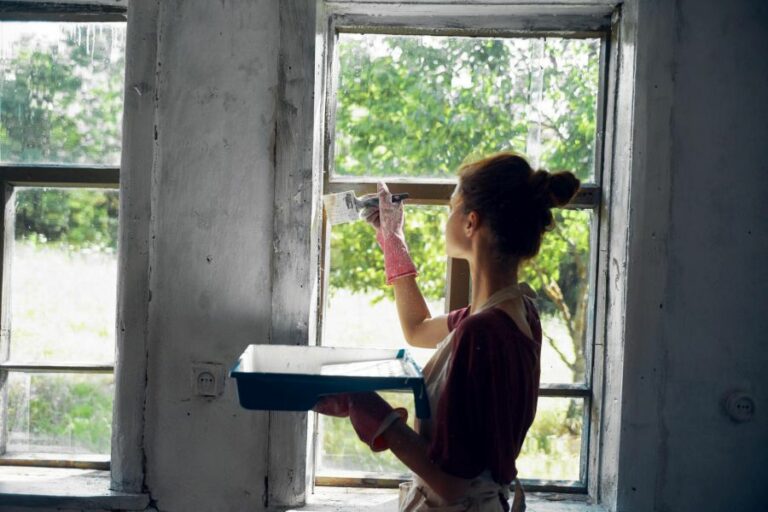Outdoor Masonry Paint, 25 Things You Should Know
Welcome to our brilliant guide on outdoor masonry paint! We know how essential it is to choose the perfect paint to protect your walls while ensuring an aesthetically pleasing finish. This blog post will unlock the secrets behind selecting the ideal paint for your projects, their benefits, and expert tips on using them effectively.
Outdoor masonry paint:
Outdoor masonry paint is essential for maintaining and beautifying exterior walls, protecting against moisture, dirt, and wear from the elements. With various types available, key factors influencing paint selection include surface compatibility, breathability, durability, color, finish, and environmental impact. Proper surface preparation, primer application, and painting techniques are crucial for achieving long-lasting, professional-quality results. Investing in this versatile product will ensure durable, attractive, and low-maintenance exterior walls for years.

Discover the magic of outdoor masonry paint to revive your exteriors. Learn about its incredible versatility, its weather-resistant properties, and uncover expert tips to make your next painting project a fantastic success. Unleash your creativity and elevate your home’s curb appeal.
Contents
- 1 Exterior Masonry Paint for Outdoor Surfaces
- 2 What Type of Paint Should You Utilize for Exterior Masonry Surfaces?
- 3 Is a Primer Necessary for Exterior Masonry Paint Application?
- 4 What are the distinctions between exterior paint and masonry paint for various surfaces?
- 5 What is the Optimal Paint Finish for Masonry Surfaces?
- 6 Is Masonry Paint Identical to Concrete Paint?
- 7 What is the Most Effective Masonry Paint for Concrete Surfaces?
Exterior Masonry Paint for Outdoor Surfaces
Outdoor masonry paint is a versatile and indispensable tool for maintaining and beautifying exterior walls. It protects and enhances brick, stucco, and concrete surfaces, making them more resistant to moisture, dirt, and general wear and tear from exposure to the elements.
• Benefits of Outdoor Masonry Paint
There are multiple benefits when it comes to using outdoor masonry paint, some of which include:
– Enhanced Appearance
A fresh coat of outdoor masonry paint can give your exterior walls a clean, uniform appearance, improving the overall aesthetic of your property. It also allows you to update and refresh the color of your walls as needed or desired.
– Increased Durability
Outdoor masonry paint acts as a protective barrier, shielding your walls against harsh weather conditions, such as intense sun exposure, heavy rain, and cold temperatures.
This added protection helps prevent damage from moisture infiltration, freeze-thaw cycles, and other environmental factors that can weaken and deteriorate your walls over time.
– Low Maintenance
Masonry paint is designed for easy upkeep. Its dirt- and moisture-resistant properties make it resistant to staining and mildew, which means your walls will require less frequent cleaning and touch-ups.
– Breathe Easy
Many outdoor masonry paints are breathable treatments that allow water vapor to escape, preventing trapping moisture within the walls. This helps to minimize the risk of mold and damp-related issues, contributing to a healthier living environment.
• Types of Outdoor Masonry Paint
Different types of outdoor masonry paint offer varying levels of performance, protection, and sheens. Here are the most common types available:
– Acrylic/Latex
Acrylic and latex outdoor masonry paints are water-based options that are easy to apply and clean up. They are UV- and weather-resistant, providing good protection against various environmental factors. Acrylic and latex paints are often available in a variety of finishes, from matte to semi-gloss.
– Silicate
Silicate masonry paint, also known as mineral paint, forms a chemical bond with the masonry substrate. This results in a highly durable and long-lasting finish that is resistant to weathering, UV rays, and moisture.
Silicate paint is typically only suitable for use on mineral-based surfaces, such as brick, stone, and lime plaster.
– Silicone
Silicone masonry paint contains silicone additives, which make it highly water-repellent while maintaining breathability. These properties make it an ideal choice for exterior walls exposed to high levels of moisture or humidity.
Silicone paint is also known for being dirt-resistant, ensuring your walls stay clean and fresh for longer periods.
• Selecting the Best Outdoor Masonry Paint
To choose the best outdoor masonry paint for your project, consider the following factors:
- Surface compatibility: Ensure the paint you select is compatible with the surface you plan to apply it to. For instance, silicate paint is ideal for mineral-based surfaces but is not suitable for plastic or metal surfaces.
- Breathability: Opt for breathable masonry paint, as this will allow moisture within the walls to escape and help prevent damp-related issues.
- Durability: The paint should offer excellent weather resistance and UV protection and be able to withstand the wear and tear of the elements.
- Color and finish: Choose a color and finish that complements your property’s aesthetic and meets your personal preferences. Some outdoor masonry paints can be custom-tinted, providing you with a nearly endless range of color options.
- Environmental impact: Many masonry paints on the market are eco-friendly, meaning they are low in volatile organic compounds (VOCs) and have minimal impact on the environment.
• Application Tips and Techniques
Proper preparation and application are crucial for achieving a long-lasting and professional-looking finish. Below are some general tips and techniques for applying outdoor masonry paint:
- Surface preparation: Clean the surface thoroughly to remove any dirt, mold, or loose paint. This can be done using a pressure washer or a stiff brush and soapy water. Allow the surface to dry completely before beginning the painting process.
- Primer: Applying a masonry primer can enhance the adhesion and coverage of the paint, especially on porous or uneven surfaces. Follow the manufacturer’s instructions when applying the primer, and allow it to dry as recommended.
- Paint application: Using a masonry brush, roller, or paint sprayer, apply the outdoor masonry paint in thin, even coats. Work in sections, maintaining a wet edge to prevent lap marks. Be sure to follow the manufacturer’s instructions regarding drying times between coats.
- Clean-up: Clean brushes, rollers, and other tools promptly after use. Water-based paints can typically be cleaned using warm water and mild detergent, while tools used for applying silicate or silicone paints may require a specific cleaning solution.
Conclusion
Outdoor masonry paint is an effective and aesthetically pleasing solution for protecting and enhancing your exterior walls. By carefully selecting the right type of paint for your specific needs and using proper application techniques, you can enjoy the multiple benefits of this versatile product.
Time and effort invested in this project ensure that your walls remain durable, attractive, and low maintenance for years to come.
What Type of Paint Should You Utilize for Exterior Masonry Surfaces?
Painting the exterior masonry of your home can transform its appearance and protect it from the elements. But, with so many different types of paint on the market, it can be difficult to determine which one is right for your project.
• Silicate Paint
Silicate paint, also known as silicate mineral paint or inorganic paint, is a highly durable and breathable option for painting exterior masonry. Silicate paints create a chemical bond with the underlying substrate, resulting in a long-lasting, hardwearing finish.
– Pros of Silicate Paint
- Breathability: One of the biggest benefits of silicate paint is its breathability. This means it allows moisture and water vapor to escape from the masonry, which can help prevent issues like efflorescence, mold, and dampness.
- Longevity: Silicate paints have excellent longevity and can maintain their appearance for decades with minimal maintenance.
- Chemical Resistance: Due to their inorganic nature, they are highly resistant to chemicals, making them suitable for use in industrial areas or near roads where there may be chemical exposure.
– Cons of Silicate Paint
- Limited Color Range: The main drawback of silicate paint is its limited color range when compared to other types of paint. The selection is primarily limited to earthy, natural tones.
- Higher Cost: Silicate paints can be more expensive than other types of paints, but the investment may be worth it for long-term durability.
- Application Challenges: The application requires a skilled professional, and the paint must be applied in the correct conditions to ensure the best results.
• Acrylic Paint
Acrylic paint is a popular choice for exterior masonry due to its flexibility and durability. It is made from an acrylic resin, which provides excellent adhesion and UV resistance.
– Pros of Acrylic Paint
- Wide Color Range: Acrylic paint comes in a vast array of colors, making it easy to find the perfect shade for any project.
- UV Resistance: Acrylic paint offers excellent resistance to UV rays, ensuring that the colors will not fade over time.
- Dirt Resistance: Many acrylic paints contain additives that make them dirt-resistant, ensuring that the paint stays clean longer.
- Ease of Application: Acrylic paint can be applied with a brush, roller, or sprayer and can be applied by both professionals and DIYers.
– Cons of Acrylic Paint
- Less Breathable: Acrylic paint is less breathable than silicate and mineral paint, which can lead to moisture build-up and potential issues with dampness and mold.
- Shorter Lifespan: Although acrylic paint is durable, it typically does not last as long as silicate or mineral paints.
• Mineral Paint
Mineral paint is composed of natural mineral ingredients such as potassium silicate, which makes it highly breathable and suitable for exterior masonry surfaces.
– Pros of Mineral Paint
- Eco-Friendly: Mineral paint is made from environmentally friendly ingredients and does not contain any synthetic additives or solvents.
- Breathability: Mineral paint allows moisture vapor to escape, helping to maintain the masonry’s structural integrity and preventing issues like mold or dampness.
- Natural Appearance: Mineral paint has a natural, matte finish that complements traditional masonry and brickwork.
– Cons of Mineral Paint
- Limited Flexibility: Due to its composition, mineral paint can be less flexible than other types, which may lead to issues with cracking over time.
- Higher Cost: Mineral paint tends to be more expensive than acrylic paint.
• Recommendations
When selecting the best type of paint for your exterior masonry project, it is essential to consider factors such as breathability, color range, and cost. In taking these factors into account, I recommend:
- For a highly breathable and durable option: Choose silicate paint. While it may be more expensive and limited in color options compared to other types, its longevity, breathability, and chemical resistance make it ideal for exterior masonry projects.
- For an affordable and versatile option: Acrylic paint is a popular choice for its ease of application, wide color range, and reasonable cost. Keep in mind its breathability and lifespan are not as good as silicate and mineral paint options.
- For an eco-friendly and breathable option: Mineral paint is an excellent choice for those who prioritize environmentally friendly products and breathability. However, consider its higher cost and potentially limited flexibility.
In conclusion, selecting the right type of paint for your exterior masonry project is crucial for the longevity and appearance of your home. Consider the pros and cons of each paint type, and make a decision based on your specific project requirements and personal preferences.
Paint Type | Description | Benefits |
|---|---|---|
Acrylic | Water-based exterior paint for masonry surfaces, like brick, stucco or concrete. | Quick-drying, low VOCs, easy to clean, resistant to mildew and UV damage. |
Silicate | Mineral-based paint that chemically bonds with masonry surfaces, available as silicate dispersion or sol-silicate paints. | Long-lasting, highly durable, breathable, resistant to algae and fungi. |
Elastomeric | High build acrylic or resin-based paint that is elastic and waterproof, effectively covering surface imperfections and small cracks. | Flexible, durable, waterproof, helps prevent future cracks, bridges hairline cracks. |
Limewash | A traditional paint made from slaked lime and pigment that creates a chalky, matte finish suitable for masonry surfaces. | Breathable, eco-friendly, antimicrobial, enhances natural texture, can help to regulate indoor humidity. |
Is a Primer Necessary for Exterior Masonry Paint Application?
When it comes to painting the exterior of your home or building, you might be wondering if using a primer is necessary before applying the masonry paint.
• Importance of Primers
Primers are essential in binding paint to the surface more effectively, ensuring better adhesion and longer-lasting protection. They can serve several purposes, such as:
- Improving long-term durability
- Enhancing the overall appearance of the paintwork
- Providing additional protection against the elements
- Sealing porous surfaces
- Promoting better paint adhesion
- Reducing the number of paint coats required
Ultimately, using a primer can save you both time and money by extending the life of your paint job, minimizing the risk of peeling or flaking paint, and helping you apply the paint more efficiently.
• Types of Masonry Primers
There are various types of primers available for masonry surfaces, and it’s essential to choose the right one based on your specific needs. Some common types of masonry primers include:
– Acrylic-Based Primers
These water-based primers are suitable for most masonry surfaces, such as brick, stucco, and concrete. They provide excellent adhesion and flexibility, ensuring lasting results. Acrylic-based primers help in sealing porous surfaces and create an even base for the masonry paint.
– Alkali-Resistant Primers
These primers are specifically formulated to combat the high alkalinity often found in new concrete, stucco, or cement surfaces, which can negatively affect paint adhesion. By using an alkali-resistant primer, you can ensure better paint bonding and prevent potential issues such as peeling, blistering, or staining.
– Waterproof Primers
In instances where the surface is exposed to constant moisture or dampness, a waterproof primer can be highly beneficial. These primers help prevent water penetration, protecting the surface from damage and mold growth.
They also create an ideal base for the masonry paint, ensuring strong adhesion and a uniform appearance.
• When to Use a Primer
While a primer isn’t always necessary, specific situations will warrant its use. Here are some instances where using a primer is highly recommended:
– New or Unpainted Surfaces
Unpainted masonry surfaces like brick, concrete, or stucco need prepping before applying the paint. In such cases, applying a primer can help create an even, uniform base, seal the surface, and provide better paint adhesion.
– Repainting Over Old Paint
The presence of an old, flaking, or peeling paint job can lead to poor adhesion and a less-than-perfect finish. By using a quality primer, especially one designed for chalking or deteriorating surfaces, you can address these issues and create a more stable base for your topcoat.
– Patched Surfaces
For masonry surfaces that have been patched or repaired, priming is essential to ensure an even and consistent finish. A suitable primer will help blend in the repaired areas and provide a smooth, uniform surface for the paint.
– High Alkalinity Surfaces
As mentioned earlier, alkalinity can cause issues with paint adhesion. Therefore, when working with surfaces like new concrete or stucco, using an alkali-resistant primer is highly recommended to mitigate these issues and create a durable, long-lasting finish.
• In Conclusion
While exterior masonry paint can sometimes be applied without a primer, there are clear benefits and situations where using a primer is highly recommended. If you’re looking to achieve a long-lasting, durable, and visually appealing finish, investing in the right primer for your project is an essential step.
Consider your specific needs and the type of surface you’re working on, and choose a primer that’s designed to address those requirements. By doing so, you’ll be setting the stage for a successful and enduring paint job that will keep your exterior masonry looking its best.
What are the distinctions between exterior paint and masonry paint for various surfaces?
When it comes to painting the exterior of your home, it’s crucial to select the right type of paint to ensure long-lasting protection against harsh weather conditions and to maintain a visually appealing appearance. Two primary options are available for these projects: exterior paint and masonry paint.
• Defining Exterior Paint
Exterior paint is designed specifically for outdoor use and offers protection against environmental factors such as sunlight, rain, and snow. This type of paint is formulated to adhere well to different surfaces, including wood, metal, and masonry, providing a consistent and appealing finish.
– Features of Exterior Paint
Exterior paint typically includes the following characteristics:
- Weather resistance: Exterior paints are made to withstand the elements, meaning they resist fading, peeling, and cracking caused by sunlight, rain, or snow.
- UV resistance: The pigments used in exterior paints are less likely to fade or change color over time because they have high resistance to ultraviolet (UV) rays.
- Flexibility: These paints are formulated to expand and contract with varying temperatures, helping to prevent cracking or peeling.
- Mildew and mold resistance: Exterior paint often contains additives that prevent the growth of fungi, keeping your home’s exterior looking clean and fresh.
- Ease of application: High-quality exterior paint easily covers surfaces, allowing for smooth and even application.
I recommend choosing a high-quality exterior paint to ensure maximum durability, protection, and ease of use.
• Defining Masonry Paint
Masonry paint is a specific type of exterior paint that is specifically designed for use on brick, stone, concrete, and other masonry materials. It offers additional benefits for these surfaces compared to traditional exterior paint, ensuring the best possible protection and appearance for masonry surfaces.
– Features of Masonry Paint
Masonry paint offers several unique characteristics that make it suitable for use on various masonry materials:
- Water resistance: This type of paint creates a waterproof barrier over the masonry surface, preventing water from entering and causing damage.
- Breathability: While it prevents water penetration, masonry paint still allows moisture to escape from the surface, ensuring the proper ventilation of the material.
- Alkali resistance: Masonry surfaces often contain alkalis that can cause some types of paint to degrade quickly. Masonry paint is formulated to resist the damaging effects of alkalis, ensuring lasting protection and appearance.
- Dirt resistance: This paint is designed to resist dirt accumulation, keeping the masonry surfaces looking cleaner and fresher longer.
- Adhesion: Masonry paint is formulated to adhere well to uneven and textured surfaces, ensuring proper coverage and protection.
Based on my experience, using high-quality masonry paint is essential when working on masonry surfaces. This ensures the best possible protection and longevity, as well as an appealing appearance.
• Comparing Exterior Paint and Masonry Paint
Now that we have a clear understanding of both exterior paint and masonry paint, let’s discuss how they compare regarding their specific applications, advantages, and limitations.
– Applications
- Exterior paint can be used on a variety of surfaces, including wood, metal, and masonry, offering versatile application options. However, it may not provide the same level of protection or visual appearance, particularly on masonry surfaces, as masonry paint.
- Masonry paint, on the other hand, is specifically designed for masonry surfaces, providing the best possible protection and appearance on brick, stone, concrete, and similar materials.
– Advantages
- Exterior paint offers a versatile option for a wide range of surfaces, including wood, metal, and masonry. It provides a consistent and appealing finish across these materials while also protecting them from harsh environmental conditions.
- Masonry paint is specially formulated for masonry surfaces, ensuring long-lasting protection, an even and consistent appearance, and resistance to various challenges that masonry materials may face, such as alkali presence, water penetration, and dirt accumulation.
– Limitations
- Exterior paint may not provide the same level of protection or visual appeal on masonry surfaces compared to masonry paint. If you need to paint a brick, stone, or concrete surface, masonry paint is the best choice for long-lasting protection and appearance.
- Masonry paint, while offering incredible benefits for masonry surfaces, is not suitable for use on wood or metal, limiting its applications compared to exterior paint.
• Conclusion
In conclusion, both exterior paint and masonry paint have their specific applications, benefits, and limitations. When painting the exterior of your home, it’s vital to choose the correct type of paint for the surface material to ensure lasting protection, durability, and visual appeal.
For wood, metal, and other non-masonry surfaces, select a high-quality exterior paint that offers weather resistance, UV protection, and ease of application. When working with brick, stone, or concrete, opt for high-quality masonry paint to provide the best possible protection and appearance for these materials.
Aspect | Exterior Paint | Masonry Paint |
|---|---|---|
Composition | Typically made from an acrylic or oil-based formula | Water-based paint with polymer binding agents and alkali resistance |
Surface | Designed for various external surfaces like wood, metal, and plastic | Designed specifically for porous surfaces such as brick, stone, and concrete |
Durability | Relatively durable but may fade, chip, or peel over time | Highly durable and resistant to chipping, peeling, and flaking |
Protection | Offers protection against UV rays, mildew, and moisture | Offers protection against moisture penetration, mold, and mildew |
Finish | Available in various finishes like gloss, semi-gloss, and matte | Smooth or textured finish options |
Application | Can be applied with a brush, roller, or spray | Can be applied with a brush, roller, or spray, but may require additional layers for opacity |
What is the Optimal Paint Finish for Masonry Surfaces?
Masonry surfaces, such as brick, concrete, and stucco, require special considerations when it comes to painting. These surfaces are porous, and choosing the correct paint finish is essential for a durable and aesthetically pleasing result.
• Understanding Masonry
Before diving into paint finishes, it’s essential to understand masonry surfaces. Most masonry surfaces are porous, meaning they absorb moisture easily. This factor can cause issues such as mold and mildew growth, peeling paint, and efflorescence.
Consequently, it’s crucial to choose a paint finish that allows the masonry to “breathe.”
• Varieties of Masonry Finishes
Several paint finishes work well on masonry surfaces. The most commonly used finishes include:
- Masonry paint
- Elastomeric paint
- Acrylic latex paint
- Lime wash
– Masonry Paint
Masonry paint, also known as mineral-based silicate paint or mineral paint, is specifically designed for masonry surfaces. It features silicate binders that chemically bond with the surface, allowing the paint to penetrate and create a long-lasting, durable finish.
Pros:
- Highly breathable, allowing moisture to escape the masonry
- Resistant to peeling, cracking, and flaking
- Retains color well over time
- Environmentally friendly
Cons:
- Can be more expensive than other options
- Limited color selection
– Elastomeric Paint
Elastomeric paint is a high-performance, water-based paint designed to expand and contract with the surface. This finish is ideal for masonry surfaces because it fills in small cracks and gaps, forming a waterproof seal that protects against water intrusion.
Pros:
- Excellent durability and protection against water damage
- Can be applied to multiple masonry surfaces, including stucco, concrete, and brick
- Covers hairline cracks and small imperfections
- Can last up to ten years
Cons:
- Can be difficult to apply due to its thickness
- Not as breathable as masonry paint
- Can be more expensive than other paint finishes
– Acrylic Latex Paint
Acrylic latex paint is a versatile option that can be applied to various surfaces, including masonry. This water-based paint is easy to work with, provides excellent adhesion, and is available in many colors and finishes.
Pros:
- Readily available and comparatively affordable
- Resistant to peeling, cracking, and fading
- Easy to clean and maintain
- Comes in various sheens, allowing you to choose the appearance
Cons:
- Not as breathable as masonry or lime-wash paint
- Less suitable for surfaces with large cracks or gaps
- May require a primer for optimal adhesion
– Lime Wash
Lime wash, a traditional finish made from slaked lime and water, has been used for centuries to protect and beautify masonry surfaces. It penetrates the surface and calcifies, creating a breathable, durable finish.
Pros:
- Highly breathable and moisture-resistant
- Eco-friendly and natural
- Can be tinted with natural pigments to achieve various colors
- Creates a unique, aged aesthetic
Cons:
- May not provide complete coverage, resulting in a textured, time-worn appearance
- Requires specific skills and techniques to apply correctly
- May be harder to find or require mixing on-site
• Recommendations
Each paint finish for masonry has unique features, advantages, and disadvantages. Carefully consider the specific needs of your project before making a decision.
- For superior breathability and environmental friendliness, choose mineral silicate-based masonry paint.
- For ultimate protection from moisture and excellent durability, opt for elastomeric paint.
- For a versatile and budget-friendly option, go with acrylic latex paint.
- For a traditional, natural, and breathable finish, try a lime wash.
It’s crucial to properly prepare your masonry surface before applying any paint finish. Ensure the surface is clean, free of loose or peeling paint, and in good condition. Consider using a masonry primer if you opt for acrylic latex paint to ensure optimal adhesion and coverage.
In conclusion, there is no “one size fits all” answer to the question of which paint finish is best for masonry. Each project is unique, and factors such as budget, desired longevity, and aesthetic preferences will impact the decision.
By understanding the characteristics of each finish, you can make an informed choice that leads to beautiful, long-lasting results for your masonry project.
Paint Finish | Description | Benefits |
|---|---|---|
Acrylic Latex | Water-based paint that combines acrylic and latex properties for durability and easy application. | Resistant to moisture, mildew, and UV exposure; easy to apply, maintain, and clean; environmentally friendly. |
Elastomeric Paint | A high-performance, flexible paint designed to bridge cracks and protect masonry surfaces from water. | Waterproofing capability, durability, flexibility, excellent adhesion, and low maintenance. |
Mineral Silicate Paint | An inorganic paint formulated with silicate minerals that chemically bond to masonry surfaces. | Extremely durable, resistant to UV exposure, moisture, and mildew, can last for decades, allows the surface to breathe, and retains natural appearance. |
Is Masonry Paint Identical to Concrete Paint?
When it comes to painting exterior surfaces, choosing the right type of paint is crucial. Two popular options include masonry paint and concrete paint.
While they may seem similar at first glance, there are key differences between the two. Understanding these differences will help you make the right choice for your specific project.
• What is Masonry Paint?
Masonry paint is a specially formulated paint designed for use on exterior surfaces like brick, stone, and concrete. It is made with durable and flexible acrylic resin, which allows it to withstand the elements and retain its color for a long period of time.
This type of paint is great for maintaining the aesthetic appearance of your property while also providing weatherproofing and protection.
– Benefits of Masonry Paint
There are several benefits to using masonry paint, including:
- Durability: As mentioned earlier, masonry paint is designed to be durable and weather-resistant, which makes it ideal for use on exterior surfaces.
- Versatility: Masonry paint is suitable for a wide range of substrates, including brick, stone, stucco, and cinder block.
- Ease of application: Compared to other exterior paints, masonry paint is easy to apply using a brush, roller, or spray equipment.
- Breathability: High-quality masonry paint allows moisture vapor to escape from the surface, which helps prevent dampness and the growth of mold and mildew.
- Dirt resistance: Many masonry paints are formulated with dirt-resistant properties, which means they will stay cleaner for longer.
• What is Concrete Paint?
Concrete paint is designed specifically for use on concrete surfaces. It is typically formulated with an epoxy or acrylic base, which provides excellent adhesion and durability.
Concrete paint is often used to coat garage floors, patios, and other outdoor concrete surfaces, as it can resist oil, grease, and other common stains.
– Benefits of Concrete Paint
Using concrete paint has several advantages, including:
- Stain resistance: Concrete paint is formulated to resist oil, grease, gasoline, and other common stains often found on garage floors and driveways.
- Strength: The epoxy or acrylic base in concrete paint provides a strong and durable coating that stands up to a heavy foot or vehicle traffic.
- Decorative options: Concrete paints are available in a wide range of colors and finishes, allowing you to customize the look of your concrete surface.
- Easy application: Concrete paint is easy to apply using a brush, roller, or spray equipment. Be sure to properly clean and prepare the surface for optimal adhesion.
- UV resistance: Many concrete paints offer UV resistance, which helps protect the coating from sun damage and fading over time.
• Comparing Masonry Paint and Concrete Paint
While masonry paint and concrete paint share some similarities, they also differ in key areas:
- Composition: Masonry paint is generally made with a flexible acrylic resin, while concrete paint typically uses an epoxy or acrylic base for added strength and adhesion.
- Suitability: Masonry paint is more versatile, as it can be used on a variety of substrates, including brick, stone, and stucco. Concrete paint is best suited for concrete surfaces only.
- Breathability: Masonry paint is more breathable than concrete paint, allowing moisture vapor to escape and preventing dampness issues. Epoxy-based concrete paints may trap moisture, leading to potential problems.
- UV resistance: While some masonry paints may offer UV resistance, it is more commonly found in concrete paints.
• Which One Should You Choose?
When it comes to choosing between masonry paint and concrete paint, the decision ultimately comes down to your specific needs and the type of surface you are painting.
- If you are working with brick, stone, or stucco, masonry paint is the better choice, as it offers excellent durability, versatility, and breathability. For projects that require more decorative options, you can find masonry paints available in various colors and finishes.
- If you are painting a concrete surface like a garage floor, patio, or driveway, concrete paint is the recommended option, as it is designed to resist stains and heavy traffic and offers robust protection.
Remember to always follow the manufacturer’s guidelines and ensure proper surface preparation before applying either type of paint to ensure the best results.
In conclusion, while masonry paint and concrete paint may seem similar, they each have unique features and benefits that make them suitable for specific surfaces and applications.
By understanding these differences and carefully considering your project’s requirements, you can confidently choose the right type of paint to achieve long-lasting results and enhance your property’s aesthetic appeal.
What is the Most Effective Masonry Paint for Concrete Surfaces?
Choosing the right masonry paint for your concrete surfaces is essential for achieving long-lasting, quality results. This in-depth guide will provide you with all the necessary information to make an informed decision about the best masonry paint for your specific needs.
• Understanding Masonry Paint and Its Applications
Masonry paint is a type of paint specifically designed for use on concrete, brick, stone, and similar surfaces. The primary purpose of masonry paint is to provide a protective layer that can withstand harsh weather conditions and prevent damage to the underlying concrete.
Some common applications where masonry paint is used include exterior walls, interior walls, floors, and ceilings. By choosing the right masonry paint, you can enhance the appearance of your home or commercial property while extending the life of your concrete surfaces.
• Key Features to Look for in a Masonry Paint for Concrete
When selecting masonry paint for your concrete surfaces, keep the following essential features in mind:
– Durability
The best masonry paint should be highly durable and resistant to wear and tear. Expect a high-quality masonry paint to last at least five to ten years before requiring another coat, with some even lasting up to 15 years under ideal conditions.
– Weather Resistance
Concrete surfaces are exposed to various weather conditions, which can cause damage and deterioration over time. When choosing masonry paint, opt for a product with excellent resistance to fading, cracking, peeling, and water damage.
– Breathability
A breathable masonry paint permits moisture to evaporate from the concrete, reducing the risk of trapped moisture, which can cause mold growth, peeling, and efflorescence.
– Coverage
The coverage of masonry paint refers to the area that a given volume of paint can cover. A masonry paint with high coverage will require less product to adequately coat your intended surface, ultimately saving you time and money.
– Ease of Application
The ideal masonry paint should be easy to apply using various methods, such as brushes, rollers, or spray equipment. It should also have a quick drying time, allowing you to complete your painting project efficiently.
• Top Masonry Paint Options for Concrete Surfaces
Taking into consideration the key features mentioned above, here are the top recommendations for masonry paint suitable for concrete surfaces:
1. Dulux Weathershield Masonry Paint
Dulux Weathershield Masonry Paint is a top-quality, water-based paint specifically designed for concrete and other masonry surfaces. Its unique formula provides excellent weather resistance, ensuring long-lasting protection against harsh climates.
It is highly breathable, allowing moisture to evaporate, and offers exceptional coverage.
2. Sandtex Ultra Smooth Masonry Paint
Sandtex Ultra Smooth Masonry Paint is a durable option that offers impressive coverage and weather resistance. It is designed to withstand extreme weather conditions and offers up to 15 years of protection. Its smooth consistency allows for easy application and a high-quality finish.
3. Farrow & Ball Exterior Masonry Paint
Farrow & Ball is well-known for its high-quality, eco-friendly paint products. Their Exterior Masonry Paint is no exception, offering excellent durability, breathability, and weather resistance. It is available in a wide range of colors, allowing you to create a stunning aesthetic for your concrete surfaces.
4. Jotun Demidekk Ultimate
Jotun Demidekk Ultimate is a premium-quality masonry paint that is highly durable and resistant to weather, algae, and fungal growth. Its superior coverage and excellent adhesion make it an ideal option for concrete surfaces. The paint boasts a quick drying time and a long-lasting finish.
5. Keim Soldalit ME
Keim Soldalit ME is an ideal choice for those seeking an eco-friendly masonry paint option. Its mineral-based formula is highly breathable, allowing for moisture evaporation and eliminating the risk of trapped moisture.
The paint offers excellent weather resistance, durability, and color retention, making it a high-performing option for concrete surfaces.
• Conclusion
Selecting the best masonry paint for your concrete surfaces is essential to achieving long-lasting results and protecting your investment.
By considering factors such as durability, weather resistance, breathability, coverage, and ease of application, you can confidently choose the right paint product for your needs.
Our top recommendations, including Dulux Weathershield Masonry Paint, Sandtex Ultra Smooth Masonry Paint, Farrow & Ball Exterior Masonry Paint, Jotun Demidekk Ultimate, and Keim Soldalit ME, will provide you with a superior finish and optimal performance.
Be sure to follow the manufacturer’s instructions and proper surface preparation techniques for the best results. Happy painting!

